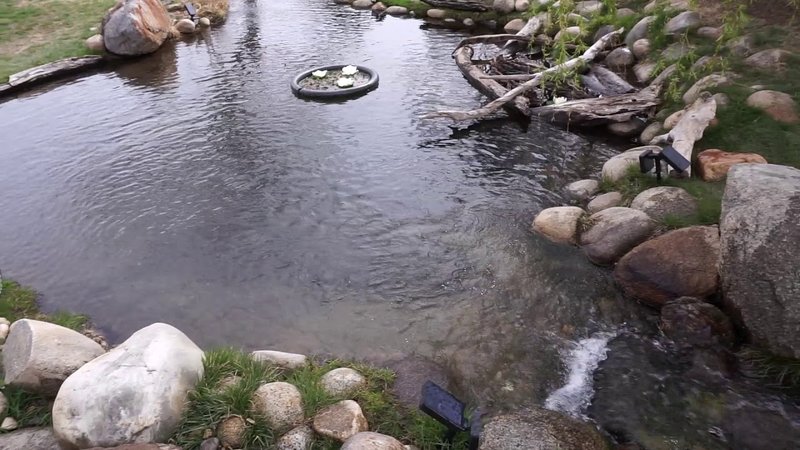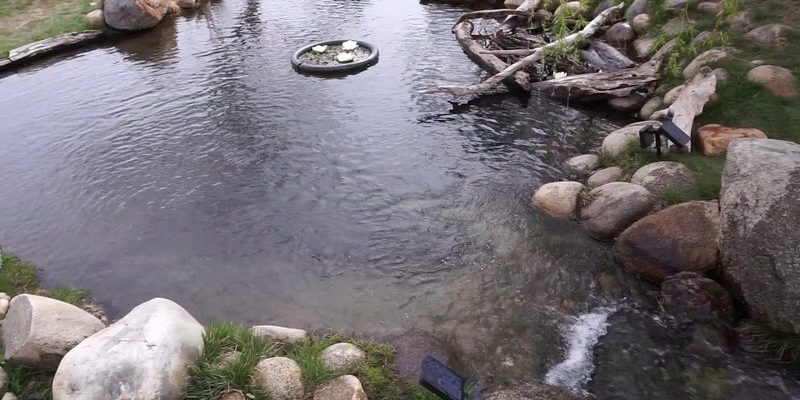
Here’s the thing: the process might seem intimidating at first—after all, it’s not something most of us learn in school. But with a bit of planning and the right steps, you can create a thriving pond that will provide you with healthy fish and beautiful scenery. Let’s dive into some essential tips and tricks to make your trout pond a success.
Understanding Trout Species
Before you fill your pond with water, let’s talk about the type of trout you might want to raise. The most common types are Rainbow Trout, Brown Trout, and Brook Trout. Each species has its unique needs and benefits.
Rainbow Trout are fantastic for beginners. They’re hardy and adapt to various conditions, making them a reliable choice. They also grow quickly, which means you won’t be waiting long to enjoy some fresh catch.
Brown Trout are a bit more challenging but often sought after for their flavor. They prefer cooler waters and a bit more privacy, so think about that if you’re leaning towards them.
Brook Trout, on the other hand, are beautiful but require very clean, well-oxygenated water. They can be a bit finicky, making them better suited for someone with a bit more experience.
So, which trout species should you choose? Honestly, it depends on your local climate, the pond conditions, and your level of commitment. Do some research on your area and assess which trout will thrive best!
Setting Up Your Backyard Pond
Now that you have an idea of the species, let’s discuss setting up your pond. You can either dig a natural pond or use a pre-made pond kit. For beginners, I recommend the latter. It’s often easier and can save you a bit of hassle.
When choosing a location, you want to look for a spot that gets some sunlight but also has shade. Trout prefer cooler waters, so too much sun can heat things up. You’ll also need to consider the size of your pond. A good rule of thumb is about 100 gallons per fish, which gives them enough room to swim and grow.
Once you’ve got the right spot, it’s time to fill it with clean, well-oxygenated water. You can use a pond pump to help circulate the water, which not only keeps it fresh but also ensures oxygen reaches the trout. Putting in aquatic plants can also help maintain water quality while providing cover for the fish.
Water Quality is Key
Speaking of water, maintaining good water quality is crucial for the health of your trout. This includes monitoring pH levels, temperature, and ammonia content. Trout thrive in water that’s between 50-65°F (10-18°C).
You might be wondering how to check these levels. You can purchase a simple water testing kit from most pet or garden supply stores. Here’s a quick checklist to keep in mind:
- pH Levels: Aim for 6.5 to 8.0
- Ammonia: Should be at 0 mg/L
- Temperature: Keep it cool, ideally below 65°F
If you notice any concerning changes, like a spike in ammonia, consider using a pond filter or adding beneficial bacteria to help break it down. Regular water changes, about 10-20% weekly, can also help keep everything in check.
Feeding Your Trout
Now that your pond is set up and the water is in good shape, let’s talk about food. Feeding trout is a critical part of raising them successfully. They thrive on a diet rich in protein, so you’ll want to choose a high-quality fish feed.
You can opt for sinking pellets, which are great because they reduce waste and keep the water cleaner. Feed them 1-2% of their body weight daily. For example, if you have 10 trout weighing about 1 pound each, you’d want to feed them around 0.1 to 0.2 pounds of food each day.
It’s also fascinating to watch trout feeding; they can be quite lively! Just remember to feed them in small amounts to avoid overfeeding, which can harm water quality.
Creating a Natural Habitat
One of the best parts of raising trout is creating a natural environment that mimics their wild habitat. Trout prefer spots with structure, so adding rocks, logs, and shrubs can make a huge difference. These provide both hiding spaces and places for them to feel secure.
You can also consider adding some aquatic plants. Not only do they enhance the beauty of your pond, but they’ll also help keep the water clean. Fast-growing plants like water lilies and duckweed can absorb excess nutrients and improve overall water quality.
Another tip? Avoid using chemicals or pesticides around your pond. These can leach into the water and cause significant harm to your trout.
Regular Maintenance and Monitoring
Just like any pet, raising trout requires regular attention. You’ll need to check the water quality frequently and keep an eye on the fish for any signs of illness or stress. Look for changes in behavior, such as lethargy or unusual swimming patterns.
You’ll also want to clean the pond filter regularly to prevent blockages and ensure proper water flow. And don’t forget about algae! While some is natural, an overgrowth can choke out oxygen and harm your fish. You can manage it by adding some algae-eating fish or manually removing it.
Finally, consider seasonal changes. Trout are cold-water fish, so in hot summer months, you may need to add shade or even a chiller to keep the water temperature down. Conversely, in colder months, you might need to take actions to protect the pond from freezing over.
Enjoying Your Catch
Once your trout reach maturity, it’s time to enjoy the fruits of your labor! Fishing in your own backyard can feel like a fantastic reward after all your hard work. Just remember to follow local regulations regarding fishing limits and seasons.
When you do catch some trout, you’ll find there’s nothing quite like the taste of fresh fish. Simple preparations like grilling with herbs or baking with lemon can showcase their flavor beautifully. Plus, it’s a great way to bring friends and family together for a meal.
Raising trout in your backyard pond can be an incredibly satisfying hobby. From setting up the pond, ensuring water quality, feeding, maintaining the habitat, and finally enjoying your catch, each step is filled with its own set of joys and challenges. With a bit of patience and care, you can create a thriving ecosystem right at home, making memories that last a lifetime.

